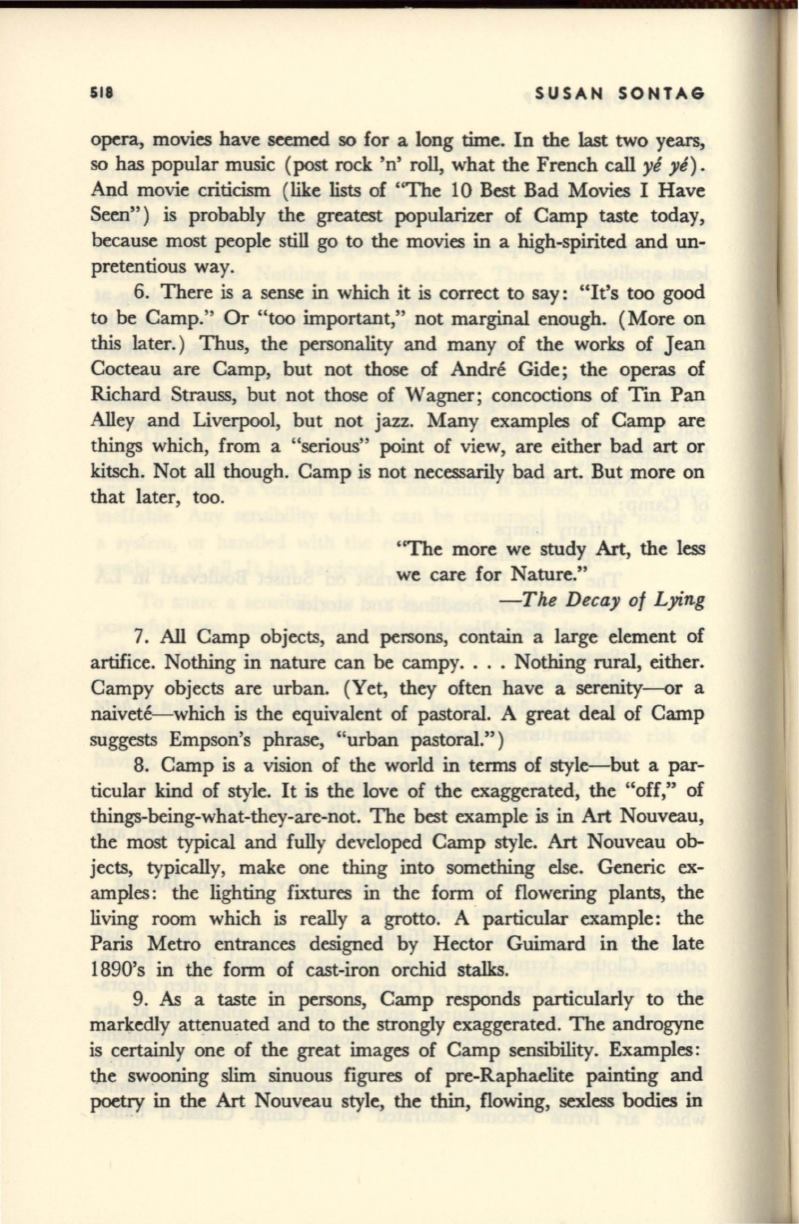

518
SUSAN SONTAG
opera, movies have seemed so for a long time. In the last two years,
so has popular music (post rock 'n' roll, what the French call
ye ye).
And movie criticism (like lists of "The 10 Best Bad Movies I Have
Seen") is probably the greatest popularizer of Camp taste today,
because most people still go to the movies in a high-spirited and un–
pretentious way.
6. There
is
a sense in which it
is
correct to say: "It's too good
to be Camp." Or "too important," not marginal enough. (More on
this
later.) Thus, the personality and many of the works of Jean
Cocteau are Camp, but not those of Andre Gide; the operas of
Richard Strauss, but not those of Wagner; concoctions of Tin Pan
Alley and Liverpool, but not jazz. Many examples of Camp are
things which, from a "serious" point of view, are either bad art or
kitsch. Not all though. Camp is not necessarily bad art. But more on
that later, too.
"The more we study Art, the less
we care for Nature."
-The Decay of Lying
7. All Camp objects, and persons, contain a large element of
artifice. Nothing in nature can be campy.... Nothing rural, either.
Campy objects are urban. (Yet, they often have a serenity--or a
naivete-which
is
the equivalent of pastoral. A great deal of Camp
suggests Empson's phrase, "urban pastoraL")
8. Camp
is
a vision of the world in terms of style-but a par–
ticular kind of style. It
is
the love of the exaggerated, the "off," of
things-being-what-they-are-not. The best example
is
in Art Nouveau,
the most typical and fully developed Camp style.
Art
Nouveau ob–
jects, typically, make one thing into something else. Generic ex–
amples: the lighting fixtures in the form of flowering plants, the
living room which is really a grotto. A particular example: the
Paris Metro entrances designed by Hector Guimard in the late
1890's in the form of cast-iron orchid stalks.
9.
As
a taste in persons, Camp responds particularly to the
markedly attenuated and to the strongly exaggerated. The androgyne
is certainly one of the great images of Camp sensibility. Examples:
the swooning
slim
sinuous figures of pre-Raphaelite painting and
poetry
in the Art Nouveau style, the thin, flowing, sexless bodies in









